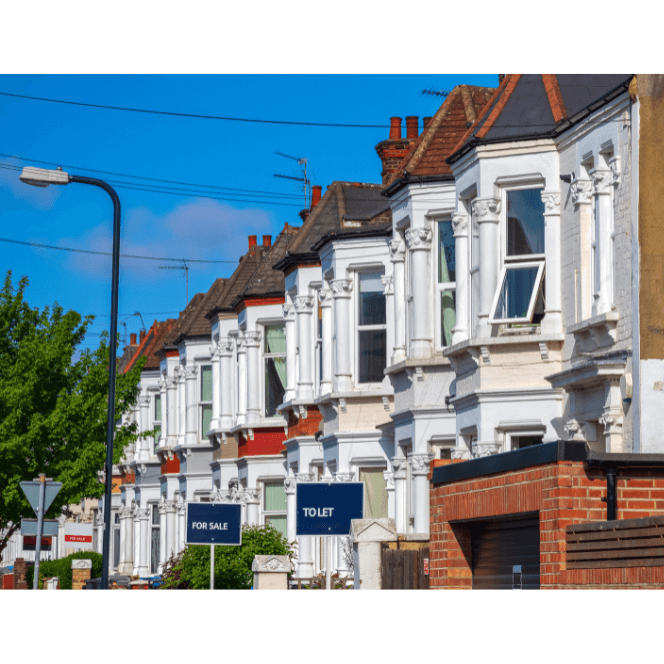A project researching the impact of a three-year freeze of the Local Housing Allowance (LHA) highlights the human consequences of rising rents and ‘no fault’ (s21) evictions. Using Office for National Statistics data, the Resolution Foundation shows the proportion of households living in private rented accommodation has almost doubled since the mid-1990’s, from 11% to 20%, with a 9% increase in average private tenancy rents in the year to February 2024. This has been accompanied by a 49% increase in s21 evictions in 2023 according to housing charity, Shelter.
This national crisis is exacerbated in places like Cornwall, as many properties become second homes and holiday lets. One of our interviewees explained:
“It was on my wife’s birthday, we were out for lunch, we had a phone call from the letting agent saying, ‘just so that your aware, we’re ‘gonna start proceedings on serving a s21 eviction notice.’ Three days later, an official paper saying s21 being served. Two months later, we were out of the house.”
Alan and his wife, both working, are in their mid-50’s[i]. With no affordable alternative accommodation in West Cornwall, they now live with Alan’s mother-in-law. Rising rents have far outstripped support provided through Local Housing Allowance (LHA) which are set using the 30th percentile of average rents in defined geographical areas.
“The prices of rental in Cornwall is just unsustainable, it’s out of people’s price ranges. . . it took us two years to find a property. A two-bed detached bungalow. It was eight fifty. The same property now, would be thirteen hundred pound. There’s some one-bedroom apartments, they want eleven hundred quid. You’ll go into like, places like Mousehole, lucky to see two or three lights on in the winter, ‘cos they’re all holiday homes or AirBnB.” (Alan).
While the ‘post-pandemic’ surge may be easing, there were estimated to be 20,688 Airbnb and Vbro rentals in Cornwall in August 2022. In 2018 Cornwall Council recorded 13,500 second homes on its council tax database, representing 40% of all properties in some areas.
Carole and Bob[ii] fear a s21 eviction. A married couple in their mid-30’s, with two teenage children, Carole has disabilities and Bob receives Employment Support Allowance (ESA). LHA of £668 makes a substantial contribution to their monthly rent of £708, but they are concerned the landlord may sell the property:
“We’re terrified of being kicked out of the house we’re in… so, we’d be on the street, homeless. A property in our street become vacant. It was a two-bedroom property, and it come up for one thousand one hundred. . . a crazy amount of money . . . they managed to rent it out within a four-week period.”
Bob: ‘They’re just landlords, they’re property people who are jumping on the bandwagon… They’re thinking, this is a better option to invest in at the moment. . . It’s okay for them to sell up and move on, and then get their millions out, where, we’re…
Carole: You’re, you’re kicking a family out that needs a house.
Bob: You’re kicking a family out who, have nowhere to go.”
Ben, single and 21 years old, lives in a small caravan on the outskirts of a mid-Cornwall village. Becoming homeless after a break-up with his family, a period of ‘sofa-surfing’ was followed by renting a room with a landlord who turned out to be violent and alcoholic. The caravan, with a monthly rent of £580, is a solution.
Ben’s work takes him to two different towns – 25 miles apart; 10 and 15 miles from where he lives – making a car essential. Insurance and petrol take one-quarter of his £400 weekly earnings.
“It was October or November last year, and that big cold spell we had, I probably done seventy pounds in two weeks in the gas. A gas bottle, it lasts me two weeks. And during winter that really becomes unaffordable. . .
“I have to borrow money to put fuel in the car, I have to borrow money to eat. I tend to find myself borrowing more and more and more. . . it ends up I’m owing hundred and twenty, hundred and thirty pounds at the end of the month, because it all just adds up and I can’t pay back.”
He receives no LHA, and despite efforts to pay is in arrears with his council tax for which he has a court summons. Just across the River Tamar, Ken, a pensioner in his 60’s, recently lost a part-time job. Living in a one-bedroom flat his rent is £475-a-month, receiving around £200 in LHA. His neighbour recently had her rent increased to £575 for an identical flat and he fears his will also rise:
“My self-respect has gone out the window. You know, yes I’ve had ups and downs, the way I feel about myself and that, you know, I lost my son to cancer, so, I’ve gone up and down like that. You know but, I just sit there, and I sit on my sofa and cry. How have I got into this state?” (Ken).[iii]
It is 65 years since C Wright Mills urged a recognition of the structural transformations that lie behind seemingly individual personal troubles. Today, this is tragically exemplified in the anxiety and despair created by today’s housing crisis. Personal stories convey the reality behind the increasing precarity.
There is not just a human cost. Payments by Cornwall Council for emergency accommodation doubled in two years, from £9,486,185 in 2020/21 to £12,982,257 in 2021/22 and £18,401,941 in 2022/23 (Freedom of Information Requests).
LHA was frozen for three years, but despite an increase in April 2024, a large gap remains. Analysis by housing agents Savills of over one million Zoopla rents in 2023, “demonstrates that across Britain only 8.5% of new listings would have been affordable using the new LHA rates.”
Housing crises in the 1960’s prompted radical responses, including secured tenancies, and rent controls. More modestly, in 2019 the Conservative manifesto promised “a better deal for renters” and abolition of ‘no-fault’ evictions. But on 25 April the House of Commons approved further delays to its implementation. Labour’s 2019 manifesto, which promised “to stop unfair, no-fault evictions” and “capping rent rises with inflation” was deleted from the party’s web site in April 2024. In June 2023, Labour announced a U-turn on its policy of supporting rent controls.
The human cost of the “hyper-commodification” of housing is growing as “the capacity of a building to function as a home becomes secondary.” (Madden & Marcuse, 2016: 26). Once again there is a need for the type of radical thinking politicians were prepared to consider half a century ago.
References
- Madden, D. & Marcuse, P. (2016) In Defence of Housing: The Politics of Crisis. Verso.
- This is drawn from a joint project with Citizens Advice examining the impact of the Local Housing Allowance freeze funded through the University of Plymouth’s ‘Get Involved’ community-based research scheme and led by Carl Evans and Nigel Jackson.
[i] Pseudonyms are used.
[ii] Pseudonyms are used.
[iii] Pseudonym is used.


